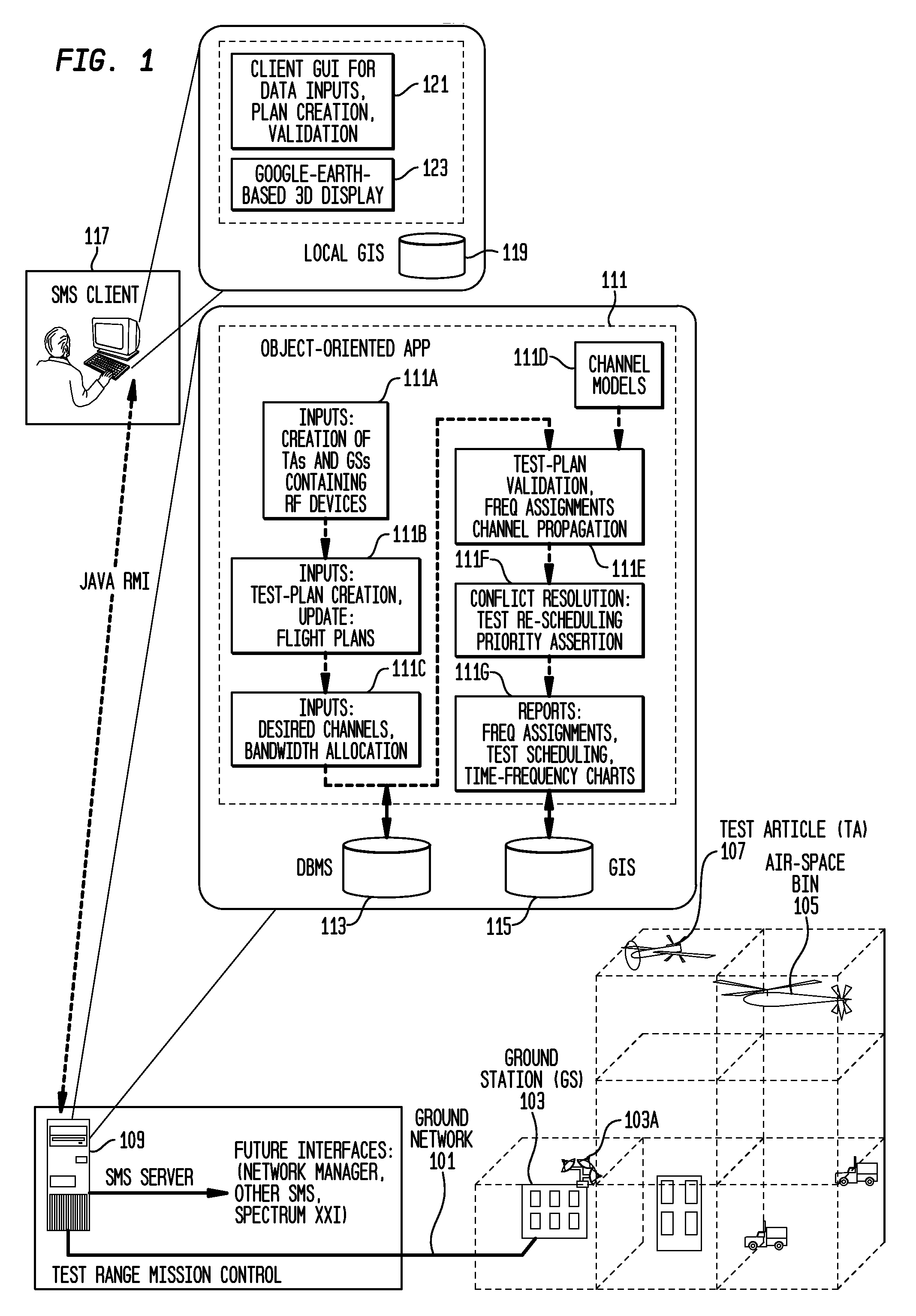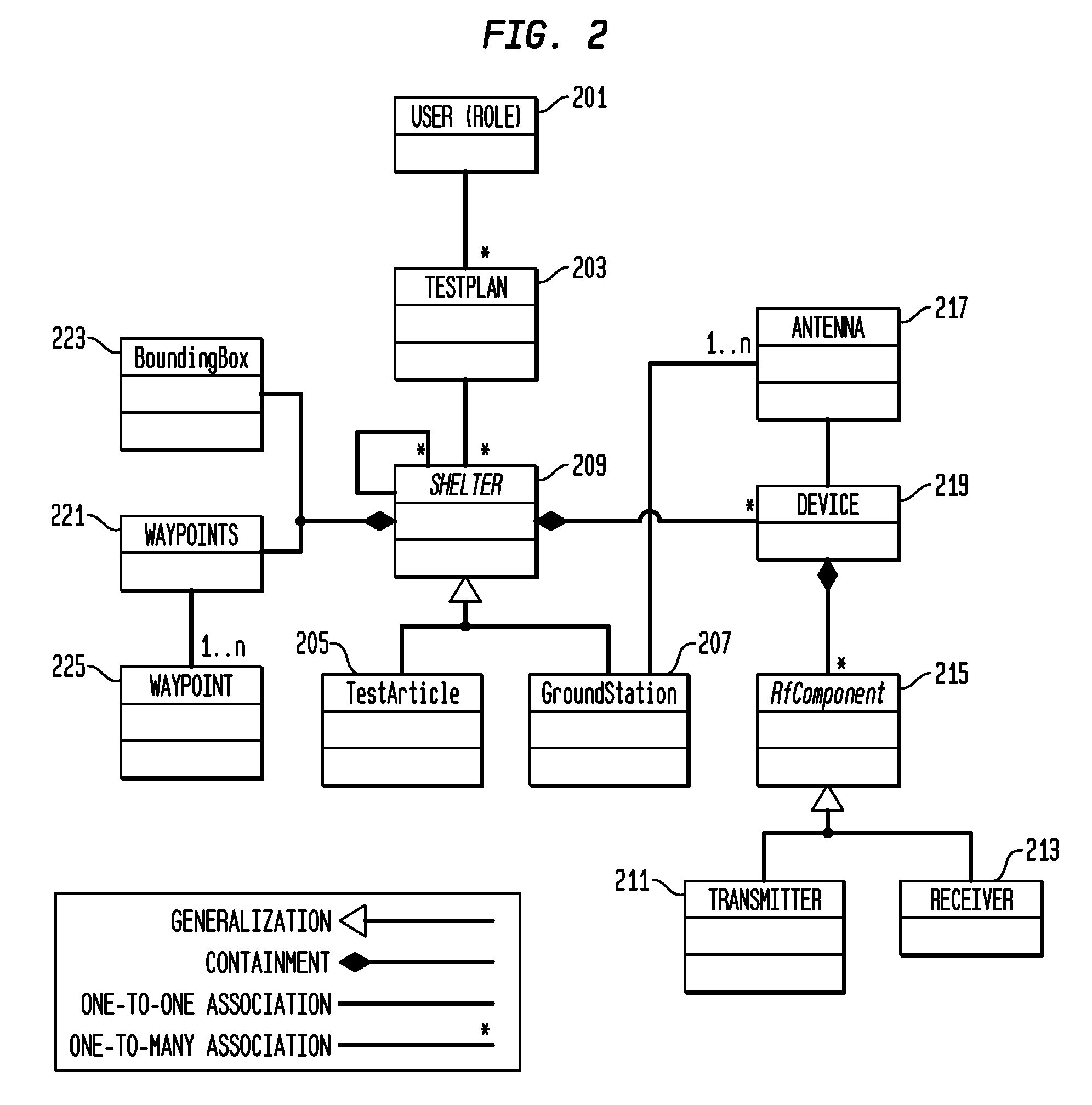Systems and methods for efficient radio frequency spectrum management in a scenario involving multiple mobile vehicles
- Summary
- Abstract
- Description
- Claims
- Application Information
AI Technical Summary
Benefits of technology
Problems solved by technology
Method used
Image
Examples
Embodiment Construction
[0050]For the purposes of describing and claiming the present invention, the term “vehicle” is intended to refer to: (a) an aerospace vehicle (e.g., an airplane or a space vehicle); (b) a ground vehicle (e.g., a wheeled vehicle or a tracked vehicle); and / or (c) a water vehicle (e.g., a boat, a ship or a submarine).
[0051]For the purposes of describing and claiming the present invention, the term “test article” is intended to refer to a vehicle (as defined herein) that has associated therewith at least one transmitter or receiver communicating with another test article or a ground station via a communications channel.
[0052]For the purposes of describing and claiming the present invention, the term “ground station” is intended to refer to: (a) a vehicle (as defined herein) that has associated therewith at least one transmitter or receiver communicating with a test article or another ground station via a communications channel; or (b) a shelter that has associated therewith at least one...
PUM
 Login to View More
Login to View More Abstract
Description
Claims
Application Information
 Login to View More
Login to View More - R&D
- Intellectual Property
- Life Sciences
- Materials
- Tech Scout
- Unparalleled Data Quality
- Higher Quality Content
- 60% Fewer Hallucinations
Browse by: Latest US Patents, China's latest patents, Technical Efficacy Thesaurus, Application Domain, Technology Topic, Popular Technical Reports.
© 2025 PatSnap. All rights reserved.Legal|Privacy policy|Modern Slavery Act Transparency Statement|Sitemap|About US| Contact US: help@patsnap.com



